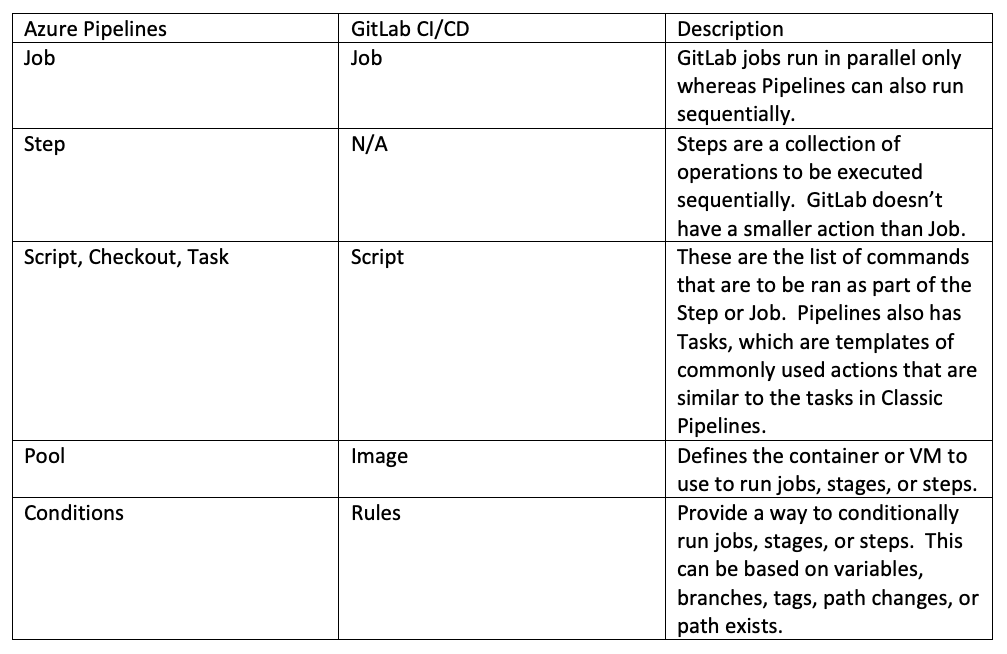Have you spent a lot of time getting comfortable using Team Foundation Server (TFS) or Azure Pipelines only to be switched to GitLab CI/CD for a project? That’s what happened to me about four months ago. Since then, I’ve been learning the differences between the tools. There are several differences between Azure Pipelines and GitLab CI/CD that I’ve experienced. This post aims to be a primer for you to understand these differences and save you a lot of research time.
Classic Pipelines vs YAML
I worked with TFS’/Azure Pipelines’ Classic Editor the most before this project. While it’s a great visual designer for automating builds, they aren’t very portable from project-to-project or environment-to-environment because the exported JSON files reference instances of other resources like Service Connections by ID, not name. When importing these JSON files into another TFS or Azure Pipelines instance, changes need to be made to update affected references. This is where YAML, which stands for “YAML Ain’t Markup Language,” comes in. YAML pipelines are the future for both Azure Pipelines and GitLab CI/CD. YAML references the Service Connection by name, making it easier to use the pipeline in other environments if the connection name remains the same.
I didn’t realize before diving into YAML for GitLab because it’s not a language but more of a file format. I had expected the little Azure Pipelines YAML I had written would translate almost perfectly to GitLab. However, GitLab doesn’t use a lot of the syntax that Azure Pipelines does. I’ve listed some of the differences I’ve become aware of, but this is likely just a partial list.
For more details, here is the YAML reference for GitLab and Azure.
Integration with Azure
Azure Pipelines offers Service Connections to connect to remote services like Azure, Docker, or GitHub.
GitLab doesn’t have an equivalent offering. Making those connections must be done in Jobs. One of the concerns is that you would have to keep the connection credentials in environment variables. When doing this, it’s important to remember to mask sensitive variables like passwords to not appear in job logs. This also means you can’t use Azure Key Vault Secrets as pipeline variables, either, which is something my previous projects used heavily.
Runners
While project-specific, the GitLab runners that were made available don’t have all the tools needed for my project. Another team that is developing the runners has provided some basic images that don’t include tools like the Azure or JFrog CLIs, which are required for the environment. This is likely to be remedied, but it’s caused a need to learn how to install it. This isn’t an issue with more open solutions. Still, my project will be isolated from the web in the staging and production environments, making it challenging to use tools like Chocolatey, Nuget, or NPM to install packages from the web. This is still something the other team is working to resolve. Still, the only resolution I see is maintaining their own repository of packages in something like Artifactory and having images or scripts pull from there.
I’m far more comfortable with YAML because of this project. While GitLab is powerful and has received a few excellent features since I began the project, the creature comforts I’m used to with Azure Pipelines (notably the Service Connections) require additional work that seems unnecessary.







